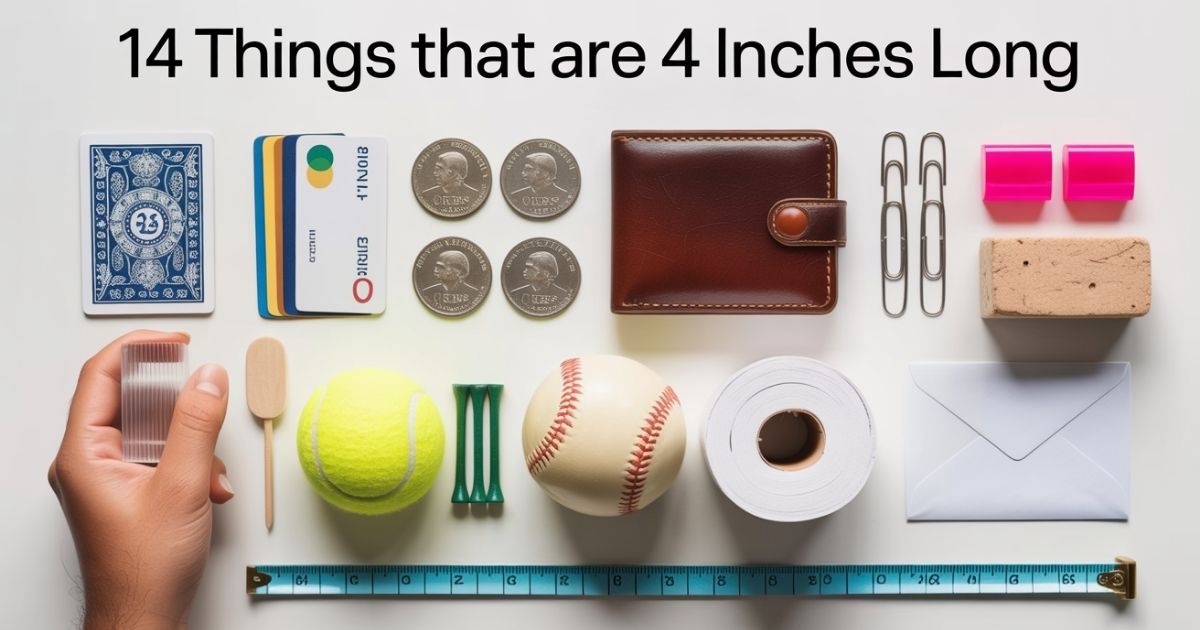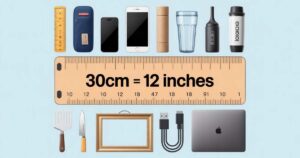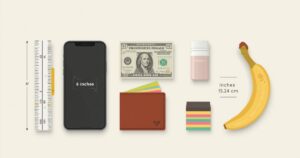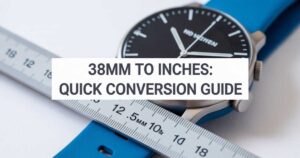Understanding measurements in everyday life helps us visualize dimensions without always reaching for a ruler. When someone mentions 4 inches, you might struggle to picture exactly how long that is. That’s why comparing measurements to familiar objects 4 inches long makes perfect sense.
Whether you’re shopping online, planning a DIY project, or simply curious about measurements, knowing what everyday things measure around 4 inches can be incredibly useful. This guide explores common items 4 in size that you likely encounter daily, making it easier to estimate this specific length whenever needed.
How Long Is 4 Inches?
Four inches equals exactly 10.16 centimeters or approximately one-third of a foot. In practical terms, it’s roughly the width of an average adult’s palm or slightly shorter than a typical smartphone. This measurement falls into that middle ground—not too big, not too small—making it a common dimension for many everyday household objects.
Understanding this length through real-world comparisons helps when you need quick measurements for crafts, home improvement, or online shopping. Rather than struggling with abstract numbers, visualizing four inch objects you already know provides instant reference points you can rely on anywhere, anytime.
Things That Are 4 Inches Long
Countless items 4 inches in length surround us daily, though we rarely pause to consider their exact dimensions. From office supplies to sports equipment, this measurement appears frequently in product design. Manufacturers often choose 4-inch dimensions because they’re convenient for handling, storage, and portability.
When you start noticing these common items 4 in size, you’ll discover an entire category of objects sharing this specific measurement. These familiar references become mental bookmarks for estimating distances, sizing up spaces, or making quick decisions without formal measuring tools nearby.
Household Items That Are 4 Inches Long
Your home contains numerous household items 4 inches in various dimensions. These home items serve different purposes yet share similar measurements that make them perfect reference points. From kitchen drawers to bathroom shelves, domestic objects of this size prove their versatility across every room.
The beauty of using home measurement comparisons lies in their accessibility—you don’t need specialized equipment to understand spatial relationships. These house tools and everyday objects provide consistent, reliable references that anyone can identify and remember easily for future estimation needs.
1. Standard Playing Card
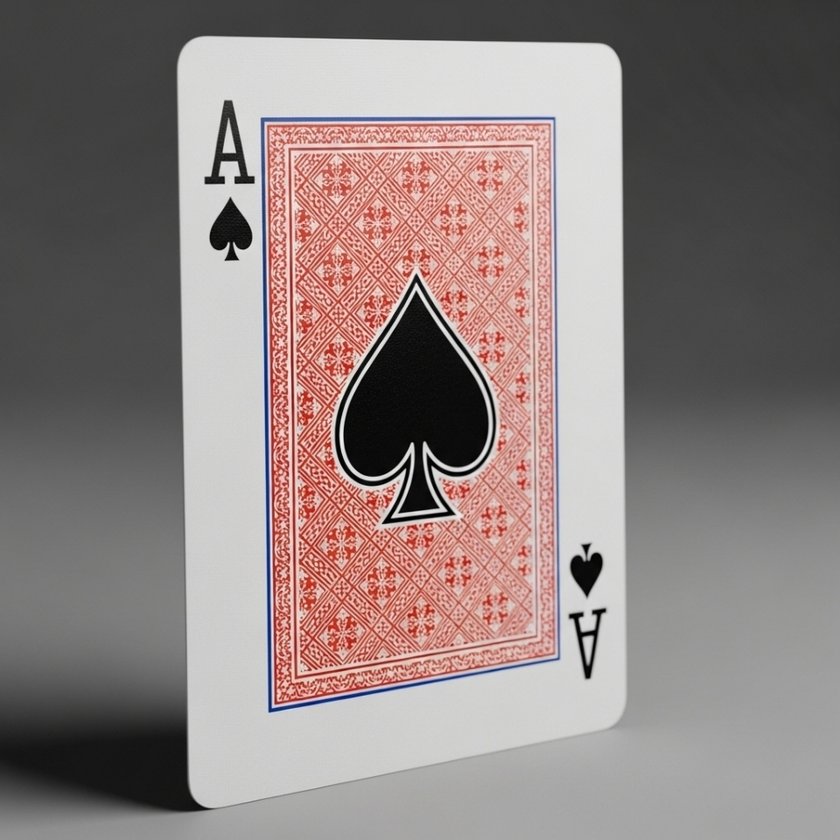
A standard playing card measures approximately 3.5 inches in height, very close to 4 inches, making it an excellent visual reference. Whether you’re holding a poker card size from a classic deck or examining a bridge card, these dimensions remain remarkably consistent worldwide.
The card dimensions are standardized across manufacturers, ensuring every deck card length you encounter matches this familiar measurement. Next time you shuffle cards, you’re holding a near-perfect example of 4-inch measurement.
This consistency in card measurement makes playing cards ideal for quick size comparisons when you need to estimate lengths in home projects or shopping decisions.
2. Two Credit Card Height
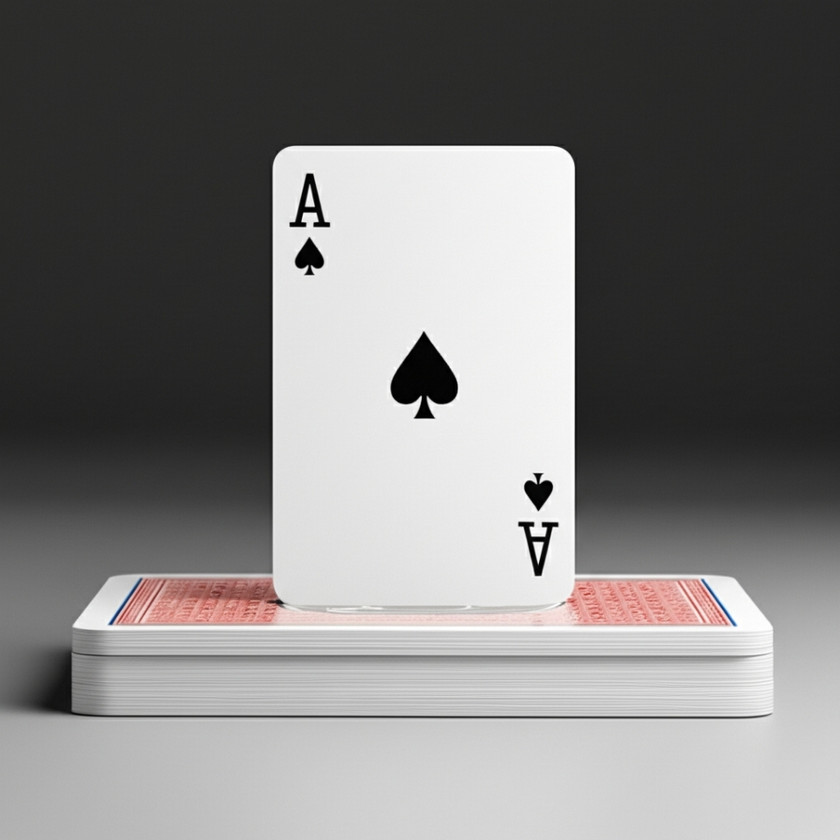
Stacking two credit cards vertically gives you almost exactly 4 inches. A single bank cards or credit card size measures about 2.1 inches in height, so placing them end-to-end creates a reliable 4-inch reference. These payment cards are incredibly standardized globally, following strict ISO dimensions.
When visualizing side-by-side cards in height formation, you’re looking at the perfect card length comparison. Since most adults carry credit card size cards daily, this reference point is always accessible in your wallet, making it among the most practical measurement tools for estimating four-inch dimensions anywhere you go shopping or working on projects.
3. Four US Quarters
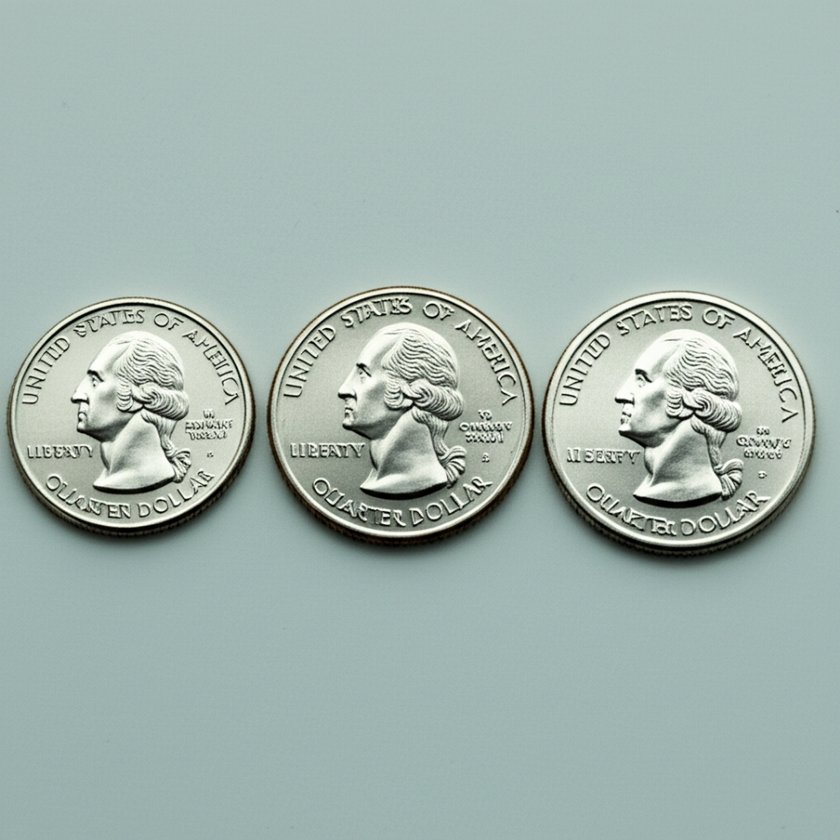
Four US quarters lined up edge-to-edge measure almost exactly 4 inches. Each quarter diameter is approximately 0.955 inches, making this coins measurement remarkably accurate. When you arrange 4 quarters size in a straight line, you create a perfect pocket-sized ruler. The coin length consistency across all American quarters means this reference never varies.
A dollar quarters total provides both monetary and measurement value, making loose change surprisingly useful beyond transactions. This four US quarters trick works great for quick measurements while shopping, crafting, or assessing small spaces where you need dimensional accuracy but lack formal measuring tools.
4. Men’s Wallet
The typical men’s wallet size ranges between 3.5 to 4.5 inches in height, with most averaging right around 4 inches. A standard wallet height fits comfortably in back pockets while accommodating cards and cash efficiently. Whether you prefer a traditional pocket wallet or modern minimalist design, the leather wallet dimensions remain fairly consistent.
This wallet measurement hasn’t changed significantly over decades because it optimally balances portability with functionality. The standard wallet serves as an excellent reference because most men carry one daily, and even women’s larger wallets often share similar height dimensions, making this a universally relatable comparison for estimating four-inch measurements.
5. Four Paper Clips
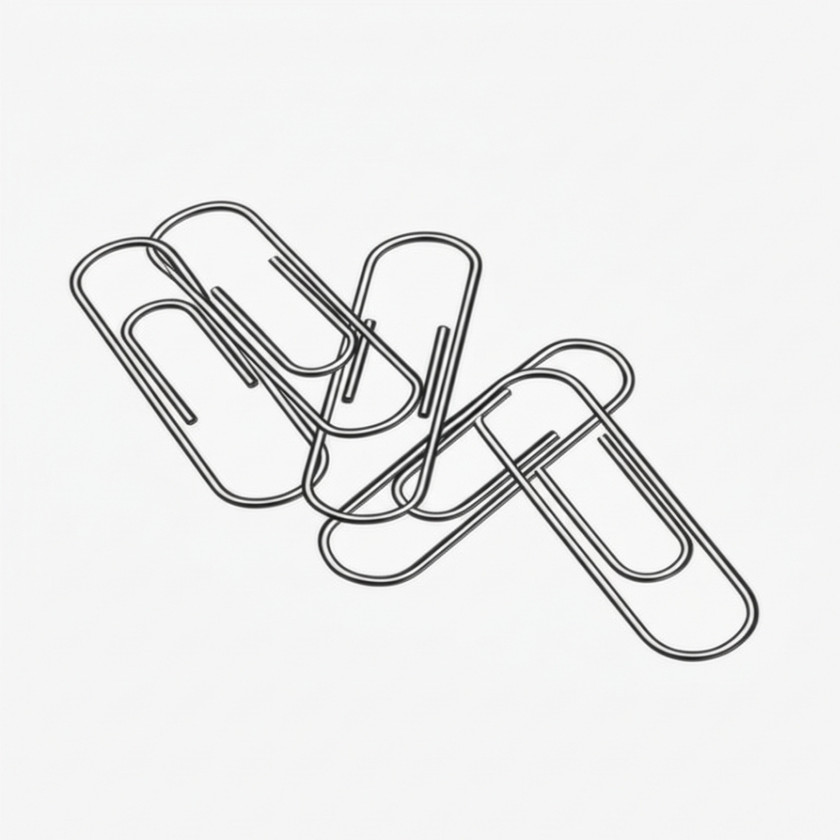
Connecting four standard paper clips end-to-end creates approximately 4 inches of length. Each regular paper clip measures about 1 inch, making this office supply calculation straightforward. Paper clips are ubiquitous in offices, schools, and homes, making them readily available for quick measurements. Their uniform size across brands provides consistency you can trust.
This simple trick transforms mundane office supplies into functional measuring tools. The wire construction allows you to lay them flat or string them together for checking dimensions of small objects, crafts, or spaces. Next time you need a quick 4-inch reference at your desk, reach for these humble yet helpful office staples.
6. Two Erasers
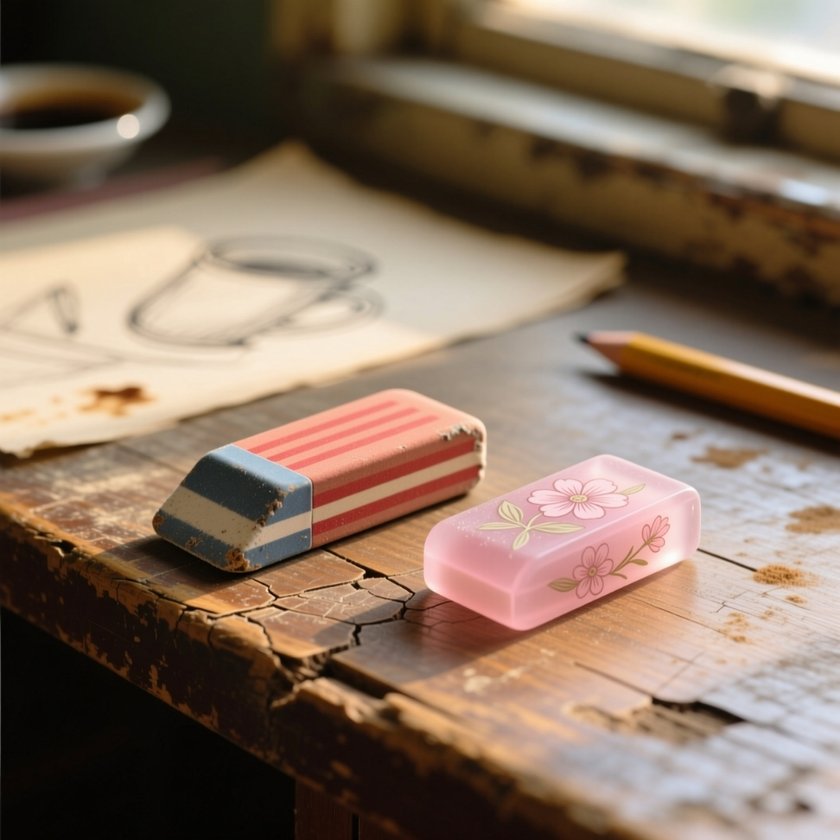
Two standard pink rubber erasers placed end-to-end measure close to 4 inches total. Each typical rectangular eraser is approximately 2 inches long, making this calculation simple and accessible. These school and office supplies maintain consistent dimensions across most manufacturers, providing reliable reference points.
Whether they’re the classic pink rubber type or white vinyl versions, their lengths remain remarkably standardized. Erasers are found in virtually every desk drawer, pencil case, and classroom, making them universally available for quick size comparisons. Their rectangular shape also makes them easy to align accurately when estimating measurements for small projects or crafts.
7. Hand Width Measurement

The hand width measurement across an average adult palm spans approximately 3 to 4 inches. Measuring your palm size from the base of your thumb to the outer edge near your pinky gives you a personal, portable ruler. While hand span varies between individuals, most adults fall within this range.
Your average hand provides the ultimate convenience—it’s literally always with you. Understanding your specific hand length dimension transforms your body into a measurement tool usable anywhere. The human hand width has been used for centuries as a natural measuring reference, and for good reason—it’s accessible, consistent per individual, and requires zero equipment.
8. Tennis Ball

A regulation tennis ball has a diameter of approximately 2.6 inches, but when you consider its circumference and how it sits in your hand, it occupies a 4-inch spatial footprint. Tennis balls are standardized worldwide for competitive play, making their dimensions universally consistent.
These fuzzy yellow sports balls are common in homes, even among non-players, as they’re used for pet toys, chair leg protectors, and massage tools. The spherical shape provides a three-dimensional reference for understanding 4-inch spaces, particularly useful when considering depth or diameter rather than just linear length. Their bright color and familiar feel make them memorable measurement references.
9. A Popsicle Stick
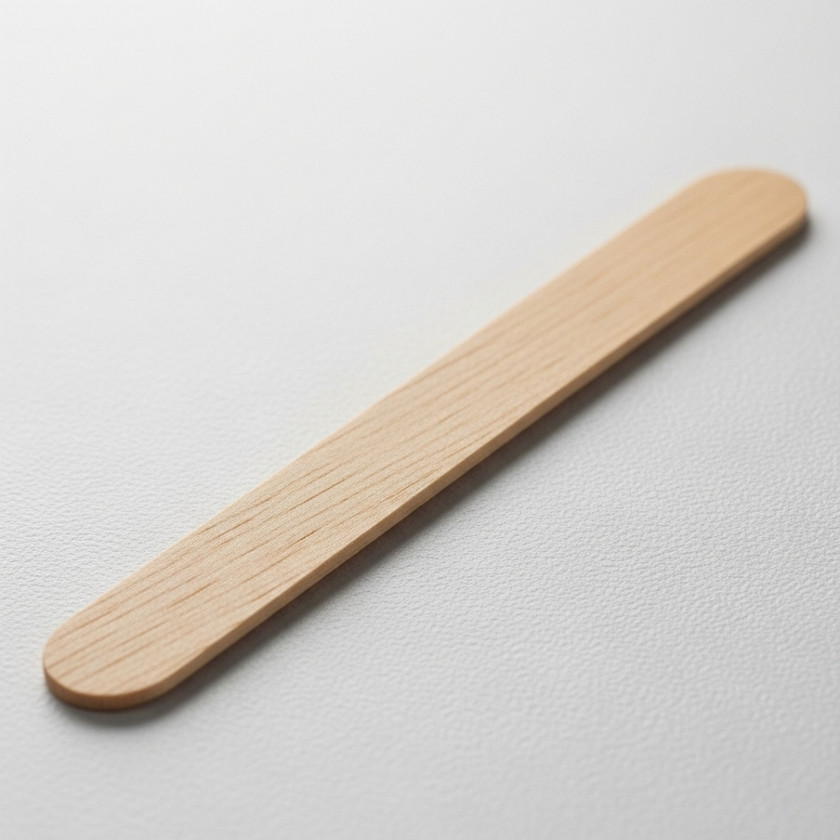
A standard popsicle stick length measures exactly 4.5 inches, making it slightly longer but still an excellent reference. These ice cream stick treats or wooden stick crafting supplies maintain consistent dimensions. The craft stick size is standardized for manufacturing efficiency, and the popsicle measurement rarely varies across brands.
A frozen treat stick serves double duty—enjoy your dessert, then keep the stick for craft projects or quick measurements. Teachers, crafters, and parents recognize these versatile wood pieces as handy measuring tools. Their straight edges and durability make them perfect for drawing lines or estimating lengths in various DIY applications around your home.
10. Two Golf Tees
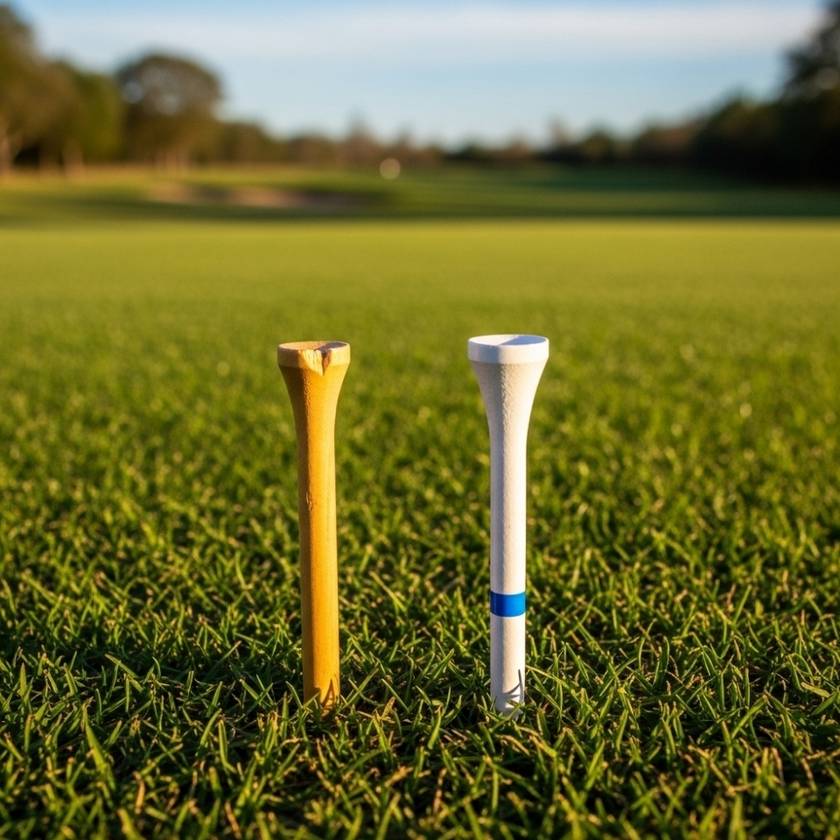
Placing two golf tees end-to-end creates approximately 4 inches of length. Standard golf measurement for tees ranges from 2.125 to 4 inches individually, but the most common size is around 2.75 inches. The tee size depends on the golfer’s preference and club type. Two standard 2 tees laid consecutively provide a reasonable 4-inch approximation.
These small golfing tool pieces are essential golf accessories found in every golfer’s bag, making them accessible references for the sports-minded. The wooden or plastic construction maintains shape consistency, and their pointed design helps mark precise measurements when needed for various applications beyond the golf course.
11. Baseball Ball

A regulation baseball has a circumference between 9 to 9.25 inches, translating to a diameter of approximately 2.9 inches. While not exactly 4 inches, the baseball’s spherical presence and how it fills a hand creates a spatial understanding close to 4 inches. Baseballs are standardized by Major League Baseball specifications, ensuring consistent dimensions worldwide.
These iconic American sports balls are common in homes across the country, making them relatable reference objects. The white leather with red stitching creates an instantly recognizable measurement tool. Whether you’re an active player or casual fan, baseball dimensions provide tangible three-dimensional perspective for understanding spatial measurements around four inches.
12. A Toilet Paper Roll
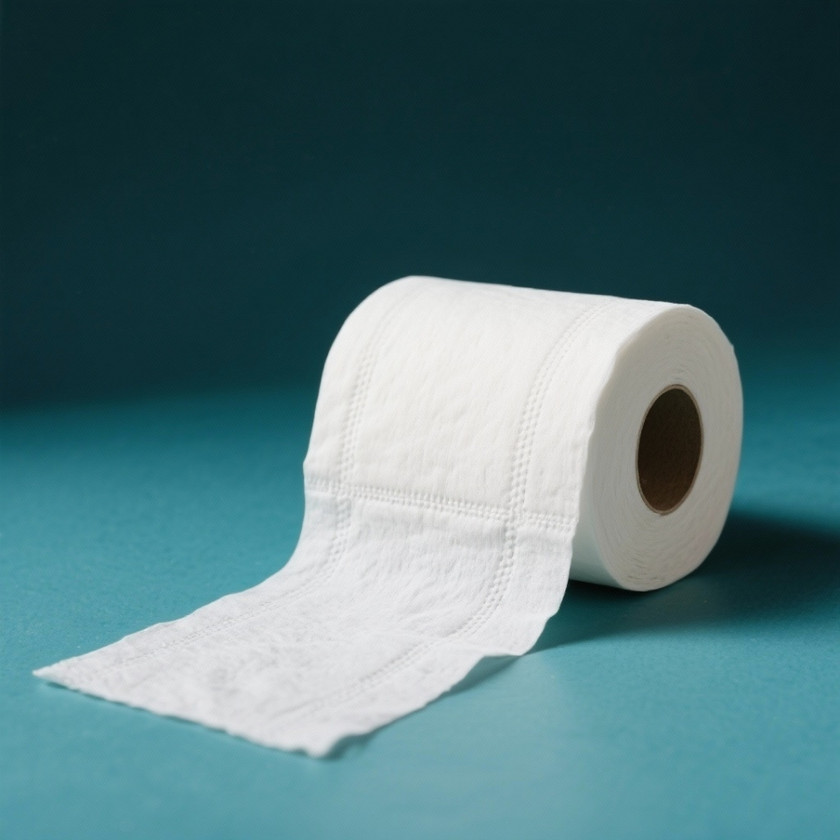
A standard toilet paper roll size has a diameter of approximately 3.7 to 4 inches, making it surprisingly accurate for measurement references. The tissue roll width remains consistent across most brands, with the bathroom roll dimensions standardized for holder compatibility. This toilet measurement applies to the entire roll including paper thickness.
The cardboard tube inside measures smaller, but the full paper roll diameter provides the 4-inch reference. The household roll universality means virtually everyone has immediate access to this comparison object. Its cylindrical shape offers both diameter and circumference perspectives for understanding four-inch measurements in daily life, particularly useful for DIY bathroom projects or space planning.
13. Half of a Standard Brick
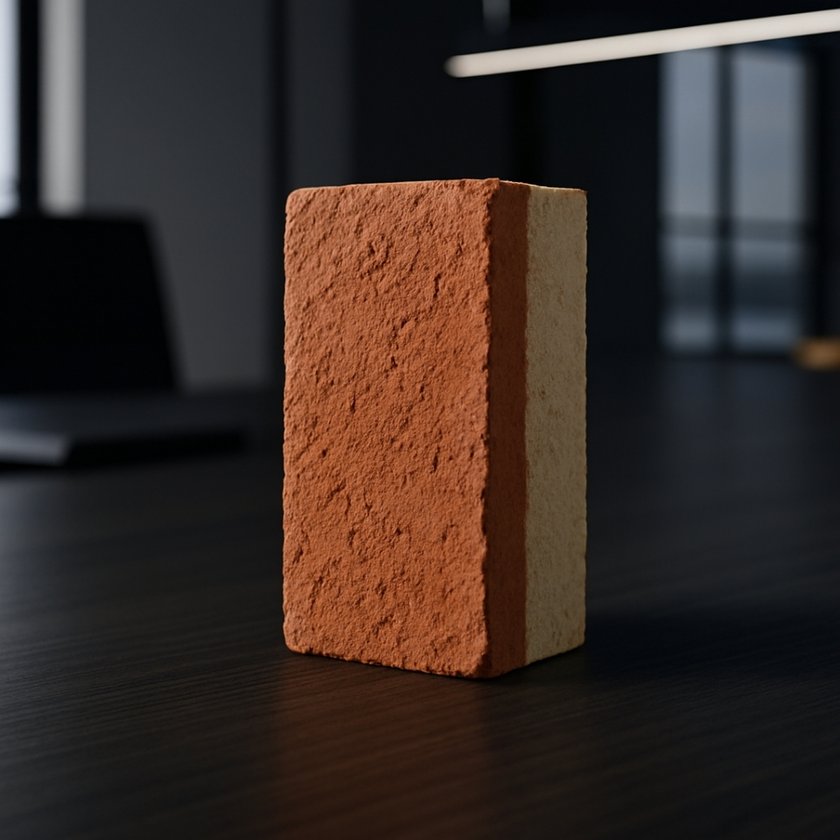
Half of a standard brick measures approximately 4 inches in length. A full brick size is typically 8 inches long, making this construction measurement perfectly divisible. Bricks are essential masonry tool components with standardized brick dimension specifications for construction uniformity. The half brick reference works excellently because bricks maintain consistent sizing across manufacturers and regions.
Construction workers and contractors inherently understand these measurements, but homeowners tackling DIY projects also benefit from this knowledge. Whether you’re planning garden borders, walkways, or home renovations, understanding that half a brick equals 4 inches provides practical measurement insight for material estimation and spatial planning in outdoor or construction projects.
14. A Business Envelope

A standard #10 business envelope size measures 4.125 inches in height, making it virtually perfect for 4-inch comparisons. These envelope dimensions are standardized for business correspondence worldwide. The mailing envelope specifications ensure compatibility with standard letter paper and postal regulations. This standard envelope type is ubiquitous in offices, banks, and homes, making it highly accessible.
The office envelope serves professional communication needs while doubling as a convenient measurement reference. The letter envelope dimensions remain consistent across brands, providing reliable comparison points.
Whether you’re mailing documents or estimating small measurements, these common paper products offer precise 4-inch references readily available in desk drawers and stationery supplies everywhere.
Conclusion
Understanding measurements through familiar things that are 4 inches transforms abstract numbers into concrete reality. These everyday things surrounding us daily provide instant references, eliminating the need for constant ruler usage. From household items 4 inches in your kitchen to office supplies on your desk, recognizing these dimensional relationships empowers better decision-making in shopping, crafting, and home improvement.
The beauty of these comparisons lies in their accessibility—you always have multiple reference points available regardless of location. Whether you’re using a standard playing card, two credit cards, or checking your hand width measurement, these tools are literally at your fingertips. Items 4 inches long serve as natural measuring guides in countless situations.
Next time you encounter a 4-inch measurement, you’ll instantly visualize objects 4 inches long from this guide, making spatial understanding effortless and intuitive. These common items 4 in size prove that the best measuring tools are often the everyday objects we already know and use regularly.
